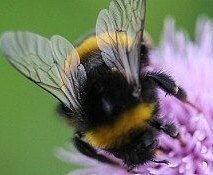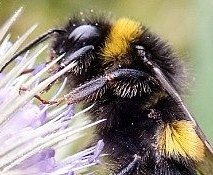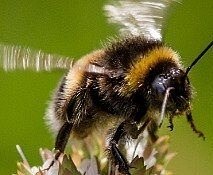
December bug of The Month: Buff-tailed bumblebees
How winter affects buff-tailed bumblebees
As winter approaches, shortening day lengths and falling temperatures will trigger many insect species within our gardens to enter a period of dormancy or hibernation. Some will be in their egg stage, whilst others will be larvae, pupae, or adults. But whatever life stage they are in, the state of becoming dormant results in their metabolism slowing down and barely ticking over while they remain inactive in locations protected from the freezing winter weather until spring.
Historically, it would have been just the new queens that emerged from bumblebee nests during summer who, after mating, went into hibernation whilst the rest of the colony died. However, within the warmer areas of urbanised Britain, evidence is mounting that some bumblebee queens are now remaining active during winter, with some being able to maintain their colonies throughout the cold months, particularly the buff-tailed bumblebee, Bombus terrestris.
What are buff-tailed bumblebees?
The buff-tailed bumblebee is one of our most common bumblebee species, whose colonies exist within an underground nest, often built inside a protected void within the ground, usually a deserted mouse hole. Their nests are also commonly found within leaf litter under a hedgerow or within a compost heap, where warmth from the decaying organic matter enables the colony to survive through even the coldest of winter days.
However, the entire colony will also require food to survive over winter, including protein-rich pollen to feed grubs, and carbohydrate-rich nectar to sustain the egg-laying queen and the worker bees that have to fly off and search for the food. And so, when a bumblebee colony remains active throughout the winter months, its workers could be out foraging even on the coldest days when the snow lay on the ground.
How to encourage more buff-tailed bumblebees into the garden
Leaving the warmth of the nest to forage during winter is potentially risky for worker bees since the longer they are out searching, the more energy they’ll expend and the more likely they’ll become weak and succumb to the cold.
However, life could become easier for the buff-tailed bumblebee workers if home gardens throughout Britain’s towns and cities contained nectar-rich, winter-flowing plants that could help shorten their foraging trips and increase chances of returning back to the warmth of their nests.



Comments (0)
Why not be the first to send us your thoughts?
